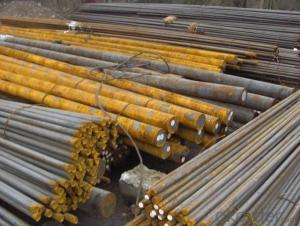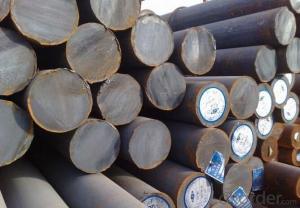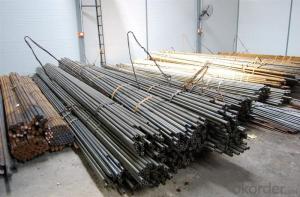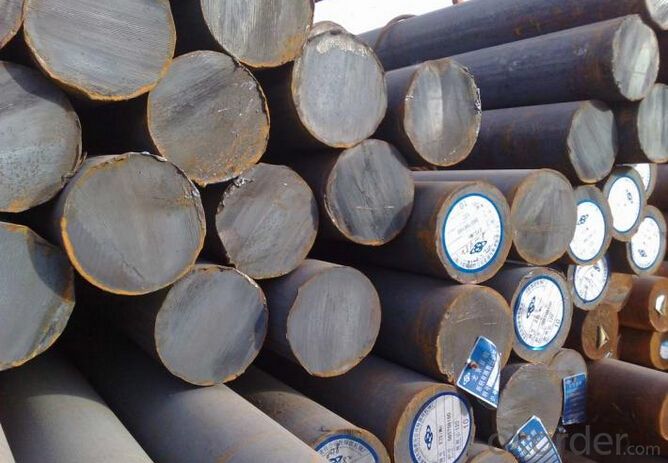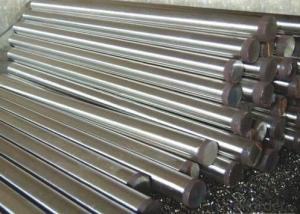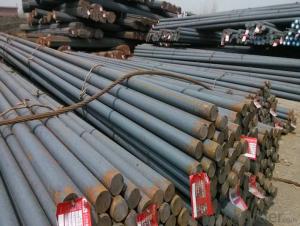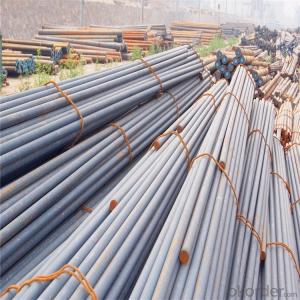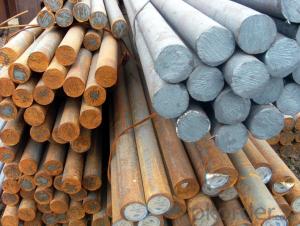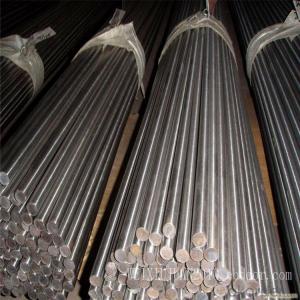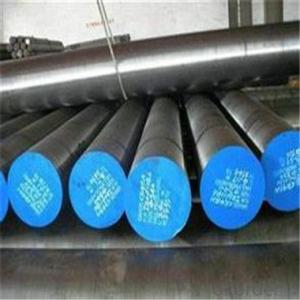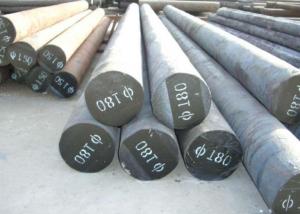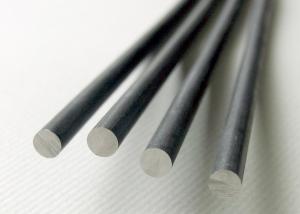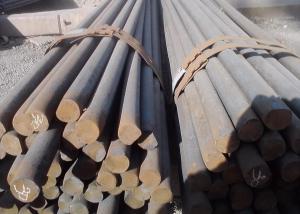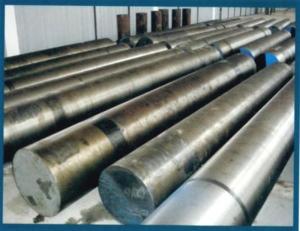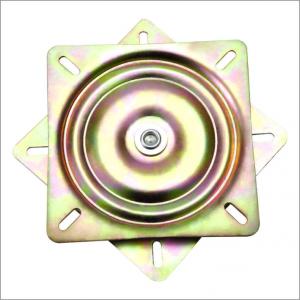Special Steel ASTM DIN JIS Standard 1020 Carbon Steel
- Loading Port:
- China main port
- Payment Terms:
- TT OR LC
- Min Order Qty:
- 30 m.t.
- Supply Capability:
- 10000 m.t./month
OKorder Service Pledge
OKorder Financial Service
You Might Also Like
Specification
Product information:
Specifications
Material | AISI 1020, S20C, C22,1.0402 | Round bar | Dia(mm) | Max 700 |
Process | EAF + LF + VD + Forged + Heat Treatment (optional) | Length (mm) | Max 12000 | |
Heat treatment | Normalized / Annealed / Quenched / tempered | Plate bar | Thickness(mm) | Max 200 |
Delivery condition | Hot forged +Rough machined (black surface after Q/T)+ Turned (optional) | Width(mm) | Max 3000 | |
Test | Ultrasonic test according to SEP 1921-84 D/d | Length (mm) | Max 12000 |
Chemical Composition
Standards: ASTM,JIS,GB,EN(DIN,BS,NF)
Grade | C | Si | Mn | Cr | Ni | Cu |
AIAI 1010 | 0.17~0.23 | 0.17~0.37 | 0.35~0.65 | ≤0.25 | ≤0.30 | ≤0.25 |
Application
Carbon steel rod applies to chemical industry, shipping industry,manufacturing industry, construction, decorate industry, electric power, pump shafts, sanitary wares, furniture handles, boiler, high temperature resistant,low temperature resistant,corrosion resistant
Product Show:
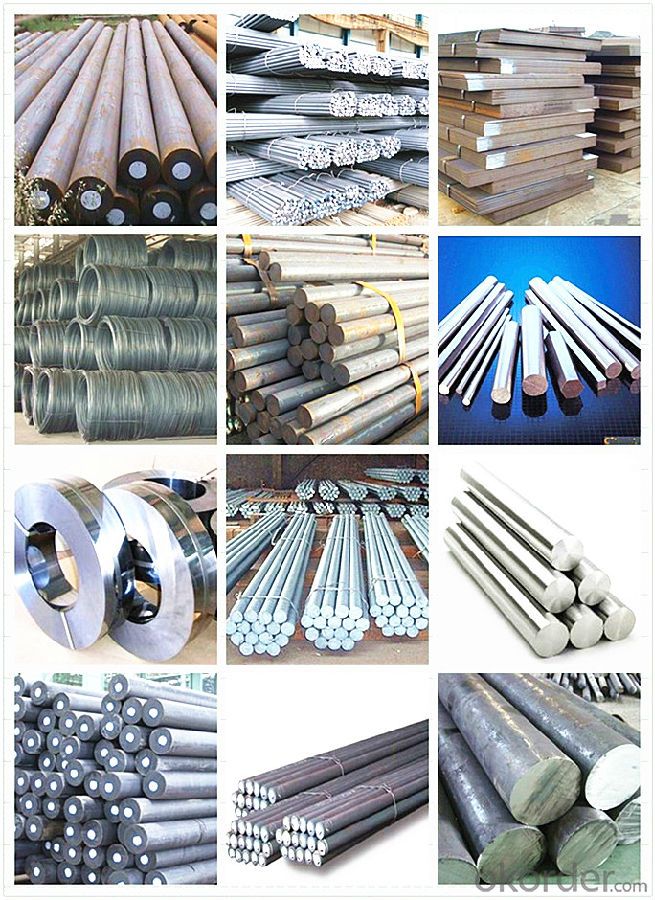
Workshop Show:
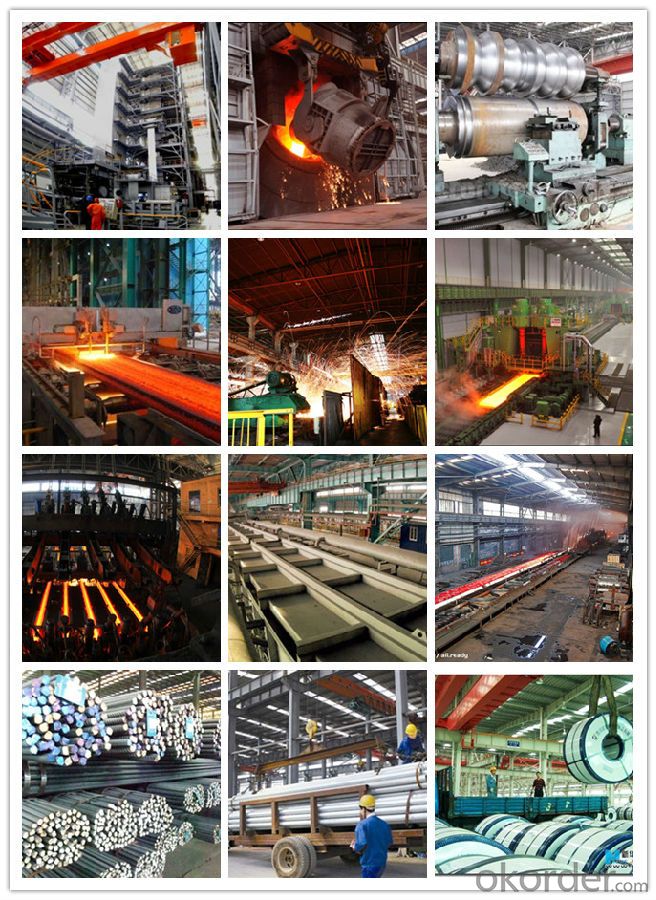
Shipping
1. FedEx/DHL/UPS/TNT for samples, Door-to-Door;
2. By Air or by Sea for batch goods, for FCL; Airport/ Port receiving;
3. Customers specifying freight forwarders or negotiable shipping methods!
Delivery Time: 3-7 days for samples; 5-25 days for batch goods.
Payment Terms
1.Payment: T/T, L/C, Western Union, MoneyGram,PayPal; 30% deposits; 70% balance before delivery.
2.MOQ: 1pcs
3.Warranty : 3 years
4.Package Informations: 1) EXPORT, In 20 feet (GW 25 ton) or 40 feet Container (GW 25 ton)
2)as customer's requirement
Why choose us?
(1) The leading exporter in China special steel industry.
(2) Large stocks for various sizes, fast delivery date.
(3) Good business relationship with China famous factories.
(4) More than 7 years steel exporting experience.
(5) Good after-sales service guarantee.
- Q: What are the different methods of surface coloring for special steel?
- Special steel can be colored using several different methods, each with its own purpose and effect. Some common methods include: 1. Heat treatment: This technique involves subjecting the steel to high temperatures, which causes controlled oxidation on the surface. The result is a layer of colored oxide, ranging from golden yellow to deep blue or black. Heat treatment also enhances hardness and corrosion resistance. 2. Electroplating: By immersing the steel in an electrolyte bath with a metal salt solution and passing an electric current through it, metal ions adhere to the surface, creating a thin layer of the desired metal coating. This method allows for a wide range of colors and finishes. 3. Chemical coloring: This process involves using chemical solutions to change the surface color of special steel. Treating the steel with a solution containing specific chemicals, such as oxidizing agents or dyes, can produce various colors and finishes, often used for decorative purposes. 4. Physical Vapor Deposition (PVD): PVD is a technique that deposits thin layers of material onto the steel surface. A solid material is vaporized using a high-energy source and then condensed onto the steel. This allows for the deposition of different materials, resulting in various colors and finishes. PVD coatings are durable, wear-resistant, and aesthetically appealing. 5. Laser marking: Laser marking uses a focused laser beam to create permanent markings or colors on the steel surface. By adjusting laser parameters, such as power and speed, different colors and effects can be achieved. Laser marking is ideal for branding, identification, or decorative purposes due to its precision and ability to create intricate designs. The choice of surface coloring method for special steel depends on factors like desired color, durability, functionality, and cost considerations. Each method has its advantages and limitations, allowing for customization based on specific requirements and preferences.
- Q: How does special steel contribute to the mining equipment industry?
- Special steel plays a significant role in the mining equipment industry by providing superior strength, durability, and resistance to harsh operating conditions. It is used in the manufacturing of various mining equipment components such as drill bits, crusher parts, conveyor belts, and buckets, enhancing their performance and longevity. Additionally, special steel enables the development of more advanced and efficient mining machinery, leading to increased productivity and safety in the mining sector.
- Q: Can special steel be used in the electronics manufacturing industry?
- Yes, special steel can be used in the electronics manufacturing industry. Special steels, such as stainless steel and high-performance alloys, offer excellent corrosion resistance, high strength, and good heat resistance. These properties make them suitable for various applications in electronics manufacturing, including the production of circuit boards, connectors, and other electronic components.
- Q: How does corrosion-resistant steel protect against chemical attacks?
- Corrosion-resistant steel protects against chemical attacks by forming a protective layer on its surface that prevents the penetration of corrosive substances. This layer, usually composed of chromium oxide, acts as a barrier that shields the underlying steel from the damaging effects of chemicals, thus preserving its structural integrity and preventing corrosion.
- Q: What are the different non-destructive testing methods for special steel?
- There are several non-destructive testing methods that can be used to evaluate special steel materials. These methods are designed to detect any flaws or defects in the steel without causing any damage to the material itself. Some of the commonly used non-destructive testing methods for special steel include: 1. Ultrasonic Testing (UT): This method uses high-frequency sound waves to detect internal flaws or defects in the steel. Ultrasonic waves are directed into the material, and the reflected waves are analyzed to identify any discontinuities such as cracks, voids, or inclusions. 2. Magnetic Particle Testing (MT): This technique is primarily used to identify surface defects in steel. A magnetic field is applied to the material, and iron particles are applied to the surface. If there is a defect present, the magnetic field will cause the particles to cluster around the defect, making it visible for inspection. 3. Liquid Penetrant Testing (PT): PT is a widely used method to detect surface defects in special steel. A liquid dye is applied to the steel surface, and after a certain amount of time, excess dye is removed. A developer is then applied, which draws the dye out of any defects, making them visible for inspection. 4. Radiographic Testing (RT): This method involves the use of X-rays or gamma rays to examine the internal structure of special steel. The steel is exposed to radiation, and the resulting image is captured on a radiographic film or digital detector. This method is particularly effective in detecting internal defects such as porosity, inclusions, or cracks. 5. Eddy Current Testing (ECT): ECT is primarily used for surface inspection of special steel. It involves passing an electrical current through a coil that generates a magnetic field. Any variations in the magnetic field caused by defects on the surface of the steel can be detected and analyzed. These non-destructive testing methods provide valuable information about the quality and integrity of special steel materials without causing any damage. By employing these techniques, manufacturers and engineers can ensure that the steel meets the required standards and specifications, thus enhancing safety and reliability in various applications.
- Q: How does special steel perform in high-temperature corrosion resistance?
- Special steel typically performs well in high-temperature corrosion resistance due to its unique composition and properties. It is specifically designed to withstand the harsh conditions of high temperatures and corrosive environments. The alloying elements in special steel, such as chromium, nickel, and molybdenum, enhance its resistance to corrosion and oxidation at elevated temperatures. Additionally, the steel's microstructure and heat treatment play a crucial role in improving its high-temperature corrosion resistance. Overall, special steel exhibits excellent performance in protecting against corrosion and maintaining its structural integrity in high-temperature environments.
- Q: What are the main characteristics of creep-resistant steel forgings?
- Creep-resistant steel forgings have several key characteristics. They possess excellent resistance to high temperatures and are capable of withstanding prolonged exposure to elevated temperatures without undergoing significant deformation. These forgings also exhibit superior strength, toughness, and resistance to corrosion and oxidation. Additionally, they have low thermal expansion and good dimensional stability, ensuring their structural integrity remains intact even under extreme conditions. Overall, creep-resistant steel forgings are specifically designed to maintain their mechanical properties and structural integrity under long-term, high-temperature applications.
- Q: What are the properties of die steel?
- Die steel is a type of tool steel known for its high hardness, wear resistance, and toughness. It possesses excellent dimensional stability, allowing it to maintain its shape and size even under extreme temperature variations. Die steel also has good machinability and can be easily shaped and formed into intricate designs. Additionally, it offers high thermal conductivity, enabling efficient heat transfer during the die-casting process.
- Q: What are the properties of high-strength steel?
- High-strength steel possesses exceptional mechanical properties such as high tensile strength, toughness, and resistance to deformation. It also exhibits excellent corrosion resistance, which makes it suitable for various heavy-duty applications. Additionally, high-strength steel offers lower weight compared to conventional steel, enabling the design of lighter and more fuel-efficient structures.
- Q: How does special steel perform in high-stress applications?
- Special steel performs exceptionally well in high-stress applications. Its unique composition and properties, such as high strength, toughness, and resistance to wear and corrosion, enable it to withstand extreme conditions and heavy loads without compromising its structural integrity. This makes special steel an ideal choice for demanding industries like aerospace, automotive, and construction, where durability and reliability are crucial.
Send your message to us
Special Steel ASTM DIN JIS Standard 1020 Carbon Steel
- Loading Port:
- China main port
- Payment Terms:
- TT OR LC
- Min Order Qty:
- 30 m.t.
- Supply Capability:
- 10000 m.t./month
OKorder Service Pledge
OKorder Financial Service
Similar products
Hot products
Hot Searches
Related keywords
